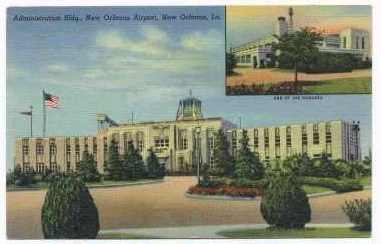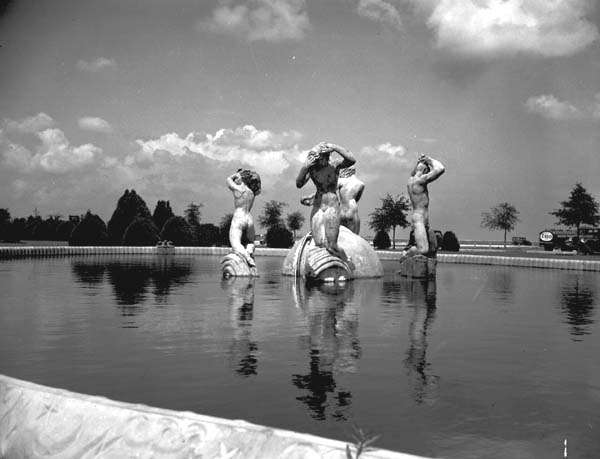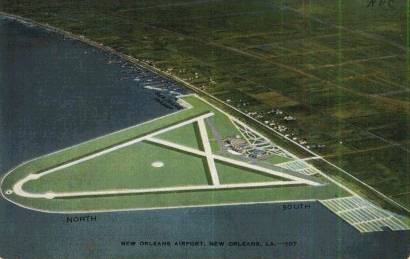|
Today in New Orleans History |
|
|
December 22




Eight years earlier, on February 10, 1934, the airport opened with great fanfare.
More than 10,000 visitors from around the world attended the dedication of what was coined "the Air Hub of the Americas".
Built at a cost of $4.5 million, the airport's 3,000 foot-long field qualified it for the U.S. Department of Commerce's
highest rating of AA-I. The architecture was considered a modern marvel. Everything about the airport was state-of-the-art
and first class. It was the first major airport in the region and the first combined land and seaplane air
terminal in the world. And it was named Shushan Airport. Architect Leon C. Weiss designed it
(as well as the state capital, the governor's mansion, the Louisiana State University buildings, and the LSU Medical School.
Inside the terminal building were/are beautiful Art Deco appointments as well as murals by artist Xavier Gonzalez, friezes
by Enrique R. Alferez who also carved the Fountain of the Four Winds which stands out front.
Shushan Airport, which had been under construction since 1929, sits adjacent to the Industrial Canal
on a man-made peninsula jutting into the lake. To make land available for this elaborate project, the Orleans Levee Board
drove a 10,000 foot retaining wall into the lake and pumped six million cubic yards of hydraulic fill to raise the field
above the water. It was this project (and others) that landed Shushan, the levee board president, in hot water. On March 27, 1934 he submitted his resignation, citing health reasons. In the letter of resignation
to Governor O.K. Allen he noted accomplishments during his tenure which included a five-and-one-half long "levee"
(along what is now Lakeshore Drive) with an average width of 3500 feet (over one-half mile) for eventual use as residential
and recreational development (this became a part of the Lakeview post-WWII subdivisions of Lake Vista, Lake Terrace, etc.).
Shushan was indicted on October 19, 1934 for eight counts of personal income tax evasion, was tried on October
8, 1935, and acquitted later that month of those charges. He remained the levee board president, however, because
at at subsequent meetings of the board there were no quorums, therefore, no means of accepting his resignation. He was
a slick operator, to say the least. He said, regarding the tax evasion charges, that he was being persecuted politically.
On August 21, 1939, Shusan (and five others) were indicted for mail fraud. He
had allegedly been aware of a bribe which led a levee board member to pursue fellow members not to submit the job for public
bid, resulting in Orleans Dredging Company netting the deal. In 1931 he also allegedly received $130,500 for his part
in extorting exorbitant fees from the government, far in excess of services rendered, in a bond refunding deal and for using
the U.S. mail to do so (mail fraud). But all that seemingly escaped notice for several years until until the indictment..
He was convicted on December 22, 1939 and sentenced to 30 months in federal prison on January 2,
1940. The U.S. Supreme Court refused to review the case on May 12, 1941 and declined to reconsider
its decision on October 3, 1941. In October 1941, the Orleans Airport Commission discussed
removing the cornerstone of the Shushan Airport which included not only his name but the names of other former levee board
members convicted of misdeeds during what became known as the "Louisiana Scandals". The cornerstone was reported
to be "the only place where the name Shushan remains at the airport (which doesn't lend credence to the oft-told urban
legend that his name was on all doorknobs, flooring, etc., including plumbing). The commission decided to keep the stone
in place for "historical significance" and a matter of record which should be preserved. Shushan
was released from prison on parole in September of 1942. On February 28, 1947, President Harry S. Truman
granted him a full and unconditional pardon. Born on January 12, 1894 in Reserve, Abraham Lazar
Shushan on died on November 3, 1966 at Touro Infirmary and is buried in Chevra Thilim Cemetery.
He was educated in New Orleans and began his career at Shushan Brothers, a whole-sale dry-goods firm owned by his father
and uncle, and later became its president and principal owner. He had served as levee board president during the terms
of four governors (Parker, Fuqua, Long, Allen) who had all appointed him to the position beginning in 1920. He was
a close personal friend of Huey P. Long. Shushan's political clout enabled constitutional amendments calling for the development
of the lakefront to be enacted. |
|
|

To receive an update for each day in New Orleans history,
join our facebook page - Today in New
Orleans History.
Analytics |

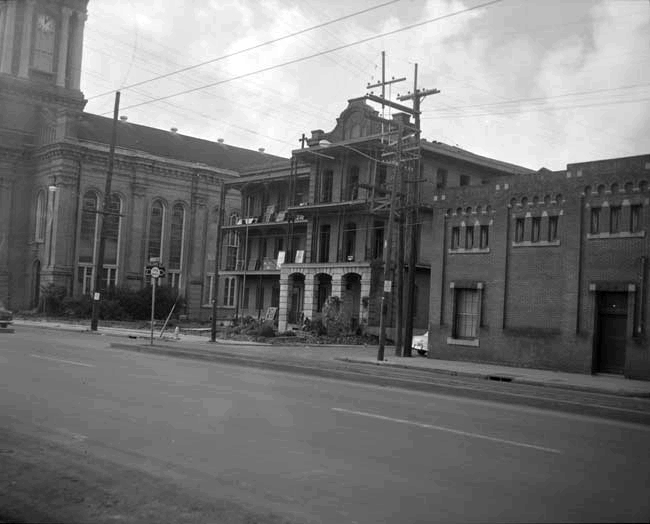

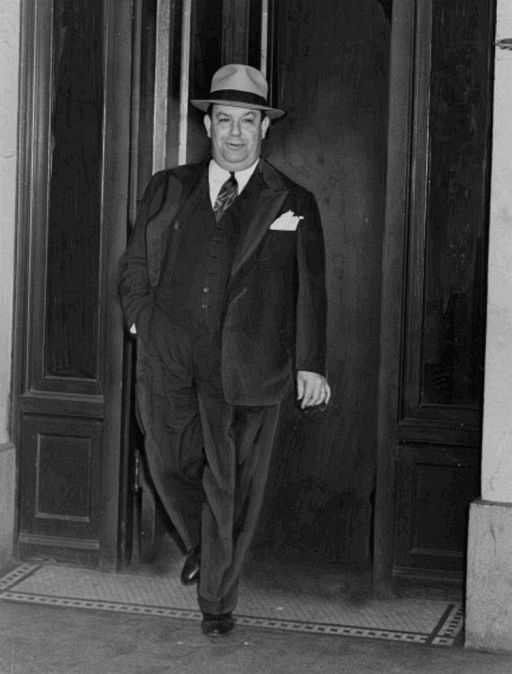 The man behind the construction of the lakefront airport and the massive lakefront "land reclamation" along the
New Orleans lake shore (see October 29) is pictured here walking out of his office alone on October 23, 1941,
after learning of his impending arrest for defrauding his fellow citizens. He had no comments for the the news reporters gathered
there but with a forced smile, said the the photographers, "TAKE A GOOD ONE, BOYS". The mandate for his arrest
had been filed at 11:20 a.m. He was in federal jail by 4:00 that afternoon.
The man behind the construction of the lakefront airport and the massive lakefront "land reclamation" along the
New Orleans lake shore (see October 29) is pictured here walking out of his office alone on October 23, 1941,
after learning of his impending arrest for defrauding his fellow citizens. He had no comments for the the news reporters gathered
there but with a forced smile, said the the photographers, "TAKE A GOOD ONE, BOYS". The mandate for his arrest
had been filed at 11:20 a.m. He was in federal jail by 4:00 that afternoon. 